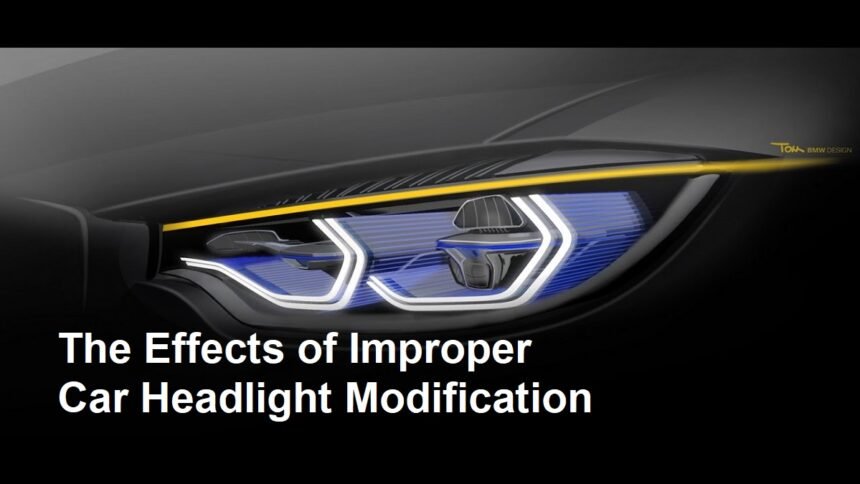Introduction
Modifying car headlights is a popular hobby among automotive enthusiasts. It offers a way to enhance the car’s looks, improve nighttime visibility, or simply add a personal touch to one’s vehicle. However, what many may not realize is that improper modification of car lamps can bring about a range of unwanted effects, both for the car owner and for others on the road. Here, I’ll dig into the potential impacts of making the wrong changes to your vehicle’s lighting system, from technical problems to safety hazards and even legal risks.
Reduced Visibility and Safety Risks
One of the first issues that crops up from improper headlight modification is the risk to visibility. Car headlights are engineered with precise angles and light distributions to ensure optimal illumination of the road without blinding other drivers. When someone swaps out bulbs for excessively bright LED or HID units without adjusting beam patterns, or installs colored bulbs not designed for road use, the light can scatter. This often results in patches of poorly-lit road, intense glare, or even dark spots right in front of the vehicle. It looks flashy, but ironically, these changes can make it harder to see and increase the risk of accidents, especially at night or in rainy conditions.
Glare for Other Road Users
I once drove behind a car that clearly had some aggressive aftermarket headlights. The dazzling white-blue beams pierced my rearview mirror and made me squint uncomfortably. This isn’t just an inconvenience: blinding oncoming drivers or those ahead of you can cause momentary vision loss or distract them from the road. That split-second discomfort could mean the difference between safe driving and a tragic mishap. The danger multiplies when many cars on the road have lights that are out of sync with regulated standards, creating a blinding sea of headlights at night.
Electrical Problems and Technical Failures
Many modern cars use sophisticated electrical systems to manage their lights, including complex wiring, fuses, and control modules. Installing bulbs with higher power demands than the system is designed for, or cutting into factory wiring to fit new fixtures, can overload circuits. I’ve heard stories of drivers who had their dashboard warning lights flicker, or whose new LED units triggered malfunctions in other parts of their car. In some cases, there’s a real risk of electrical shorts and even fire if fuses or wiring can’t cope with the extra load. So, that flashy new mod might leave you stranded or facing a hefty repair bill.
Voided Warranty and Insurance Issues
Another headache for those tempted by DIY mods: manufacturers don’t like it when you tamper with key vehicle systems. Unauthorized changes to headlights may void parts of your vehicle warranty, especially if the modification is linked to a future electrical or safety problem. Insurance companies, too, may reject claims if it’s proven that an illegal or improper lighting setup contributed to an accident. That puts all the financial risk squarely on the car owner.
Legal Consequences and Inspection Failures
Most countries have strict standards for vehicle lighting, from the maximum brightness and color temperature to beam pattern and alignment. Modifying your lights in a way that breaks national or local traffic laws puts you at risk of fines, failed vehicle inspections, or even having your car deemed unroadworthy. Imagine making a big investment in stylish new lights, only to be ticketed and forced to remove them just months later. I can’t count how many times I’ve seen police pull cars over just for non-compliant headlights!
Negative Impact on Resale Value
We all want our cars to maintain value over time. Unfortunately, non-standard modifications—especially ones that affect functionality or appearance—can make it harder to sell your car down the road. Potential buyers might worry about electrical or legal troubles, or simply not share your taste in lighting mods, reducing your pool of interested customers.
Conclusion
In the end, I’ve learned there’s nothing wrong with personalizing your vehicle, but not at the expense of safety and legality. The smartest approach is to research thoroughly, use certified products, and have them installed by trusted professionals. If you’re not sure, consult with automotive experts or your car’s manual to keep your ride stylish—and safe—for everyone on the road.












